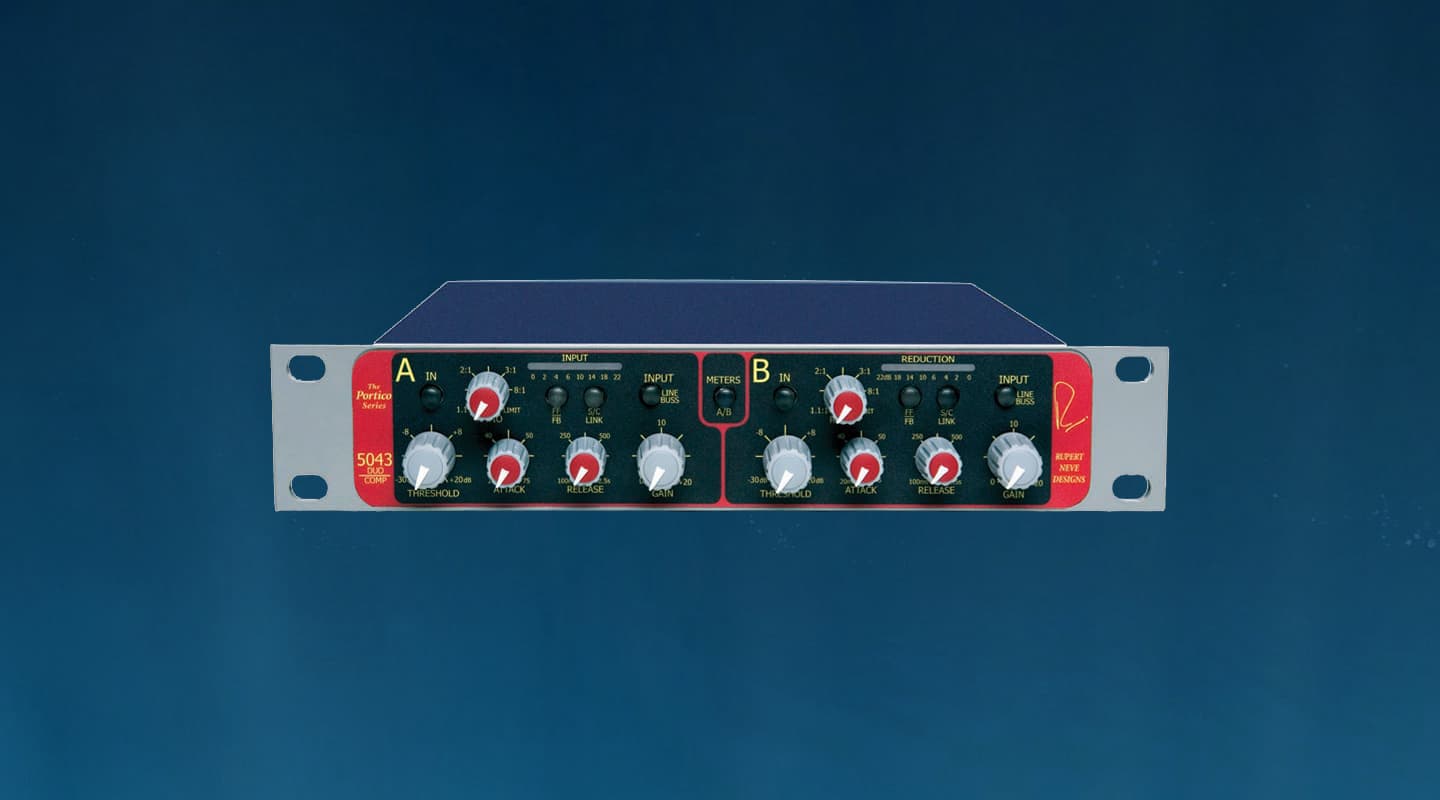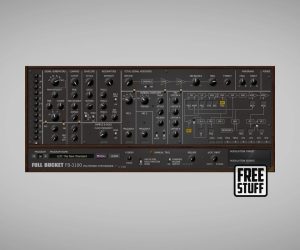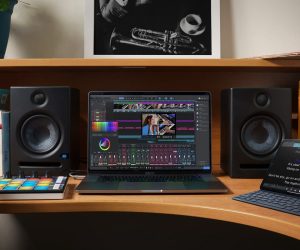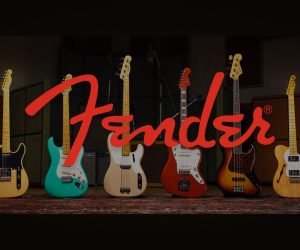
RND Portico 5043 Comp/Limiter & 5042 True Tape Emulation
Rupert Neve has returned to his roots with a range of gear that’s all about performance.
Text: Greg Walker (5043 review) & Andy Stewart (5042 review)
The Rupert Neve Designs Portico series is a new range of high quality 1RU half-rack sized audio tools that shares the inherent audio pedigree that has made Rupert Neve designs renowned over recent decades. The Portico range marks a new era for Rupert Neve however, in that his latest offerings come directly from the man himself via a new wholly self-owned company – a luxury he hasn’t enjoyed since his days at Focusrite. Rather than be filtered through a larger organisation (which has tended to promote him like a ‘star recruit’ and arguably compromised his designs into the bargain), Rupert Neve’s new Portico range is, in several respects, truer to his design and construction philosophy than anything bearing his name in the last decade.
The new range includes dual microphone preamps, a mic pre/equaliser, two-channel compressor limiter and a stereo tape emulator – and this stable is sure to expand over the coming year. The electronics of all four units are housed in a completely shielded metal shell with a 5mm aluminium faceplate. The front panels are visually clear and precise, aesthetically pleasing and beautifully ergonomic, and feature ultra-smooth analogue controls and switches. Input and output transformer-balanced circuitry is standard and component amplifiers are almost entirely discrete, following the design principles of many previous Neve classics. The Portico modules also come with specially designed power supplies, which stabilise and filter mains power to protect them from the vagaries of our erratic Aussie ‘240’ Volts. The Portico units are designed to function either as standalone devices or as part of a larger mixing system, which utilises the built-in bussing network found in each. An alternative control layout is also available, allowing the units to be racked in a vertical 5U arrangement. The tape emulator and stereo compressor/limiter are what we’ll be focussing on in this review…
5043 TWO-CHANNEL COMPRESSOR
Physically, the Portico 5043 exudes quiet confidence with its dusky purple body, grey, red and black faceplate colour scheme and clear white pointers on each of its 10 knobs. The rear panel features balanced Neutrik XLR I/O for each channel and four ¼-inch jack plugs for individual Portico bus inputs and compressor channel linking. Power comes from a detachable (and very sturdy looking) wall-wart and is activated by a discrete circular push button. On the front panel each channel has continuously-variable rotary controls for compression threshold, ratio (1:1 – 40:1), attack (20 – 75 milliseconds) and release (0.1 – 2.5 seconds) as well as make-up gain. Small backlit buttons engage silent bypass, feed back/feed forward compression, stereo linking and the Portico bus input. In an unusual but effective touch, the LED meter above the left channel indicates output level while the right channel shows gain reduction. Alternatively, a centrally-located button allows the meters to show either left or right channel activity at any given time. These meters are very functional and informative, the legending is clear, albeit somewhat small. The now-familiar Neve signature has been thankfully toned down relative to some previous product lines, and the feel of the pots and buttons is superlatively smooth.
5043 DESIGN PRINCIPLES
The key electronic process in any compressor or limiter circuit is the way in which the source signal is modified by a voltage controlled amplifier or attenuator to alter that signal’s amplitude. As the 5043 manual points out, there are numerous types of VCAs including valve, optical, integrated and discrete solid state circuits, which all impart different compression characteristics upon a source signal. What Rupert Neve has endeavoured to do here (with great success) is to produce a transparent characteristic in the compressed signal by using a very accurate audiophile VCA; i.e. the processed signal differs from the original in amplitude only, with the VCA introducing very little in the way of distortion or noise into the chain. Another key design aspect is the retention of strict linearity below the compression threshold. The musical ‘character’ of the 5043 is therefore principally generated by the balanced input and output transformers rather than the compression circuit itself. The result of this approach is an exceptionally clean, unobtrusive, yet powerful form of compression.
The two main ways in which a VCA can affect the source signal are via feeding it the compressor’s input or output voltage. Many classic compressor designs use the output voltage (usually called ‘feed back’ compression because they utilise the already processed signal as a controlling voltage, resulting in a slower response time with more ‘overshoot’ and a softer character), and others use the input voltage (‘feed forward’ compression, which is the more aggressive of the two). Perhaps the most inventive aspect of the Portico 5043 is its offering of a choice between these two modes, and therefore an expanded palette of compression options.
FEED FOR THOUGHT
To say that the Portico 5043 does not overtly colour the sound is to be guilty of gross understatement. In fact, I found this to be perhaps the single most transparent compressor I have ever used. The source signal retained remarkable fidelity and coherence under all but the most extreme settings in both limiting and compression roles. My solitary gripe was the lack of an input control, but if you have your external input levels set right this isn’t really a problem. I have to say the difference between the two compression types was fairly difficult to discern – the ‘feed forward’ mode tends to be just that bit brighter and more, well, forward. Aside from the very subtle sweetening imbued by the discrete amplifier circuitry, don’t expect anything too radical out of this box. Rupert Neve is in some ways going against the grain here – while everyone else is vying to design outboard with more and more ‘colour’ and ‘character’, the Portico 5043 is designed to produce compression with virtually no audible artefacts whatsoever! But before all you distortion-loving trance heads and indie snobs start deserting this review, consider this: vocals recorded through this compressor will retain most of their apparent dynamics while gaining much in smoothness and power (while not crapping or flattening out). Ditto for things like electric guitars and acoustic instruments where apparent sustain can be easily increased with no damage done to the sound’s integrity. Yet another ditto for full stereo mixes where all the dirty work has already been done and what is required is balance and subtle yet powerful dynamic control. Chaining the two channels of the 5043 together gives you some wonderful combinations for sophisticated dynamic control and broadcast tricks like ducking. In short, there is still a very important place in many studios for a high-class compressor/limiter that’s clean and transparent, and at the asking price, a stereo unit of this quality is certainly going to make its mark.
5042 ‘TRUE TAPE’ EMULATION & LINE DRIVER
My first reaction upon seeing the Portico ‘True Tape’ emulator – and the rest of the Portico range for that matter – was that it seemed nowhere near as ‘dinky’ as I had imagined it to be. The units are far slicker and better built than pictures imply – altogether more substantial both in weight and strength. What I inadvertently discovered after handling these new units for the first time was that I had become a bit of a ‘half rack unit snob’ over the years, without realising it: if a product didn’t stretch across the full 19 inches, I wasn’t interested. And as for third-rack units, well…
But this bias (no pun intended) has been utterly irrational, based on nothing more than the fact that half- and third-rack units don’t easily bunk in with all my other gear – unless I strap two or three together of course (although I still have three RNCs that roll about like homeless waifs, never having been given a permanent home). But with the arrival of the Portico range – and a couple of other, quality, half-rack unit designs already on the market – it may be time we each started building our first half-rack bay (easily done), which would open up our studios (and minds) to a whole wave of gear that’s being built with an economy of scale to improve audio performance without increasing manufacturing and shipping costs. Or am I the last one to realise this?
Rupert Neve’s Portico ‘True Tape’ emulator is, of course, tapeless. It’s not like a Roland Space Echo or a Mellotron; there are no tape heads, transport mechanisms or tape loops of any kind (even though an initial glance across the unit’s controls might have you believing otherwise), just transformer balanced line amplifiers and some other tricky Neve analogue circuits that emulate the saturation characteristics of tape… minus the hiss, wow and flutter that, to a greater or lesser extent, make up the other sonic ingredients of most of the world’s tape machines. The guts of the 5042 consist of two line driving amplifier circuits with transformer-balanced inputs and outputs that utilise some refreshingly old-school components which are actually recognisable, and more importantly, easily repairable. Rows of resistors, capacitors, op-amps and transformers adorn a relatively spacious circuit board, and nowhere (apart from on two separate boards that drive the LED metering) is there the now familiar micro-circuitry which can prove almost impossible for local technicians to repair – in the event of failure, of course – and which often means a unit needs to be returned for lengthy periods overseas to the manufacturer. Further to that, the construction also refreshingly lacks an on-board switch-mode power supply (the switch-mode supply is external, to minimise internal heat and noise, as well as to safeguard against a failing supply ‘frying’ the audio circuitry around it).
AT A PLACE CALLED PORTICO…
As Greg has already mentioned in his preceding description of the 5043 stereo compressor, the 5042 tape emulator is similarly subtle in its influence over the audio driving through it. This is no emulation of a wild, unpredictable or erratic tape machine, but rather an archetypical – almost abstract – notion of what a tape machine has historically been. It doesn’t emulate the sound of a dodgy old Tascam with a recalcitrant noise floor and an erratic pinch roller rubber. Nor can the unit really lay claim to sounding like a Studer (although perhaps it feels closer to an A80 MIV to my ears than other machines, but that’s a bit of a speculative stretch, to be honest). There’s nothing about the 5042 that emulates the latent fear of the tape tearing in half as it spools at breathtaking speeds (á la an Ampex ATR100), nor does it have the rock ’n’ roll punch of an MCI. The 5042 is not wholly like any of these machines, but what it clearly emulates is something that all of them possess to some degree, and that’s a characteristic ‘head-bump’ (as it’s always been affectionately known). This characteristic low-midrange boost, intrinsic to the sound of tape machines of all shapes and sizes (which is basically the mechanical side-effect of tape/head interaction) is nicely emulated by the Portico the moment you ‘engage the tape’, as it were.
What’s nice about the 5042 is that not only has Rupert Neve designed the unit to emulate the sound of a tape recorder (albeit a somewhat idealised one), he has also built in certain ‘mechanical’ outcomes reminiscent of a tape machine. For instance, when the input/tape level buttons are pressed, which switches the LED meters from input level to the measure of faux recording levels, nothing shows up on the meters unless the ‘engage tape’ buttons are also activated. This will probably confuse some people initially, but it follows the mechanical logic of a tape machine that wouldn’t register level on tape if the unit wasn’t in ‘record’. There are also two buttons that switch the ‘tape machine’ from 7.5ips to 15ips, which has very subtle effects on the top end and more obvious effects on the bass frequencies.
The 5042’s functionality is actually quite simple. There are two basic controls on the unit (per channel), the first knob being an input Trim. This is effectively the calibration knob – an incoming signal of 0dBu lights up the first ‘lineup’ LED on the meters when the Trim knob is set to 12 o’clock. This is where Rupert suggests (in the manual) you should set your incoming signal peaks, to illuminate this first LED. Initially this is a little odd for someone used to lining up a tape machine where VU meters typically display 0dBu over on the right hand side of the needle’s trajectory. Seeing only one LED light up on the far left of the meter instinctively felt too low to me…
The second, larger knob controls the ‘tape saturation’, and this only affects the sound when the ‘engage tape’ button is pressed (illuminating red). Interestingly, although this knob effectively drives the amount of ‘level to tape’, it has absolutely no influence over the output volume of the unit, which again seems instinctively a little odd. Unlike a tape machine, where the volume of an incoming signal would naturally increase if the recording level were raised up, the 5042’s design melds the record and replay gain controls of a tape machine together as one. As you increase the ‘recording level’ to ‘slam’ the ‘tape’, the replay level attenuates the output to compensate so that the overall output remains constant. Again, this is perhaps a little odd at first, but ultimately an elegant solution that allows you the freedom to mess about with tape saturation levels without having to constantly re-adjust the output gain. This also means that you’re only ever listening to the effects of the saturation, not just the ups and downs of level, which can be distracting and deceiving.
Using the unit across a mix, which I inevitably did, given that it’s a stereo device (I wonder when someone will bring out a 24-track version of this type of thing!), quickly saw me departing from the ‘correct’ gain structure in order to get the emulator cranking. As my instinct had already told me, I quickly found that calibrating my mixes to the Portico so that the peaks only lit up the first input LED left me scratching around for more saturation, which I quickly had open to full throttle. Increasing the input gain allowed more saturation potential, although I was initially just testing to hear how ugly things could get when the unit was fed too much gain. It certainly got pretty ugly, producing some really crunchy and clapped out sounds – this might be beneficial to individual instruments at some point, but perhaps not so for an entire mix. Given that I was in the middle of a session at the time of testing, I quickly backed things off until I eventually settled on a sound that provided me with some power in the bottom end while the top end remained almost unchanged.
I’d have to say my gut feeling was initially that this box was almost too subtle for its own good. But as I used the 5042 on several mixes I was eventually reminded that audio gear shouldn’t always be judged by how radical or extreme its effects are. Extreme outcomes aren’t always what you’re after, and a ‘radical’ box is not, by virtue of its wild changes, somehow better value for money than a subtle one. And besides, the effects of recording to tape are nearly always subtle (assuming you’re not intentionally slamming tape for a specific purpose) and most untrained ears and monitoring environments can barely discern the difference anyway. I soon realised, however, that the 5042 was doing great things to the bottom end of my mix, adding power and weight to the songs long before the signal began to break up. Switching the ‘Engage Tape’ button in and out soon proved that these supposedly subtle effects I was getting were actually quite vivid in the mix, once I knew where to listen for them. The compression effect was pushing the bottom end up through the midrange, strengthening my mix in a way that I soon became reliant upon. Disengaging the ‘tape head’ was then like taking a knife to a football, deflating the mix in a way that was not subtle at all. My conclusion: this box works wonders on the bottom end and has some desirable faux tape compression effects that are very addictive once they become obvious.
It hardly needs to be stated that the Portico True Tape emulator is vastly more practical than an actual tape machine – particularly in the hands of those who, through no fault of their own, couldn’t thread up a tape spool if their life depended on it. Of course, it’s not as much fun as a real tape machine either… tape machines are amazing beasts; their presence, sonic balance and depth, and even their smell can be reassuring at times. But the reality is that tape machines need to be used regularly, serviced regularly, overhauled occasionally, aligned daily, cleaned and pampered continuously and regularly repaired with parts that are often are hard to get, impossible to get or expensive to buy. And that’s just the reliable machines! Although I’m a firm believer that recording to tape is of benefit to at least some aspects of nearly any recording you care to contemplate, owning a tape machine is like owning a dog, you don’t just buy it and then move on to the next thing. You have to form a relationship with it, for better or worse. The reality is that most people’s interaction with the mechanics of a recording device these days scarcely stretches beyond the on/off switch. If you’re this type of person (and that’s fine if you are) the Portico 5042 is the ‘tape machine’ for you. No moving parts to worry about, no alignment issues, no head wear… and the reel of tape lasts forever!


























RESPONSES